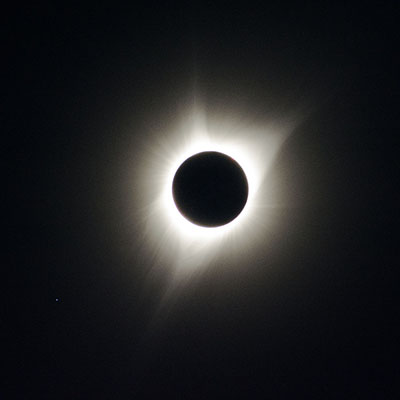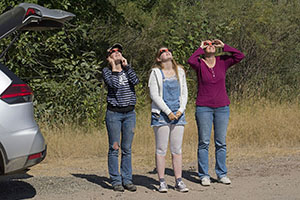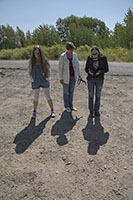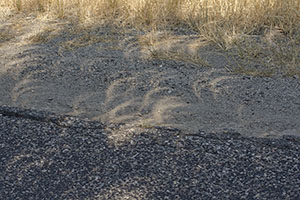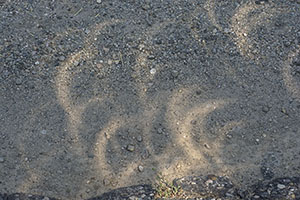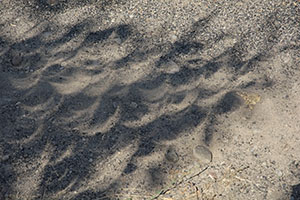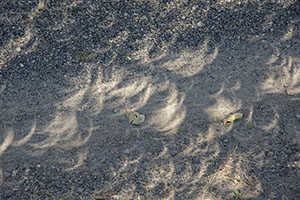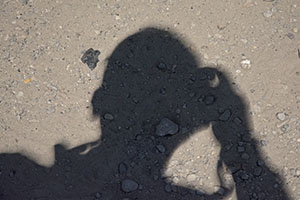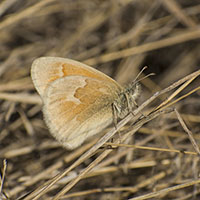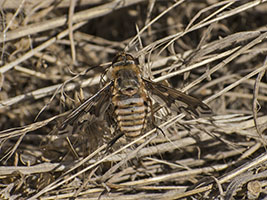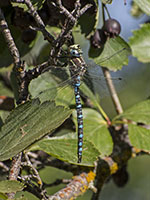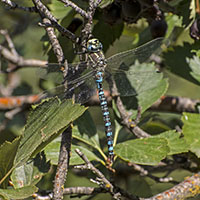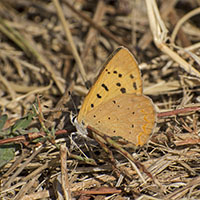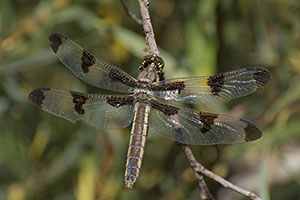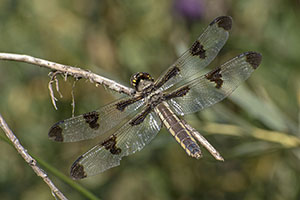|
The reason to visit the states this year was the solar eclipse of 21 August,
which, weather permitting, would be visible all over the USA. The full eclipse
would be visible in a narrow band running from Oregon, via Idaho and Wyoming all the way
to the east coast. We organized our two-and-a-half week stay in the USA partly in
Utah, partly in Yellowstone.
But the pinnacle was meant to be the complete solar eclipse today. We planned to see
the eclipse at Rexburg, where the partial eclipse would commence around 10:15 AM
and the complete eclipse around 11:30; the complete eclipse would last for roughly 2.5 minutes.
The weather turned out to be perfect: some cloud banks early in the morning, but towards
10:15 AM the sky became completely cloudless. But from our stay at West Yellowstone
we still had to drive some 130km, and heavy traffic was predicted days in advance.
We left at 7:00 AM, and the first half hour we could drive at the maximum allowed speed;
but soon enough we found ourselves driving at snail's pace due to a traffic jam...
After a nervous half hour or so we passed by the car accident that had caused the traffic jam,
and a few minutes later we could drive at normal speed for the rest of our trip to Sugar City
so that we were more than an hour early - luckily!
We found a quiet place near Sugar City, close to a beautifully meandering river, where I
looked for insects before the eclipse commenced.
The full eclipse was as spectacular as was to be expected; but the gradual obliteration of
the sun's light till those 2.5 minutes of night during the day was equally memorable.
At first, the brain compensates for the gradual loss of sunlight; but once more than
3/4 of the sun's disc is blocked by the lunar passage in front of the sun, you realize you
no longer feel the sun on your skin. Also, you start to notice that light intensity drops.
While colors per se are unaffected, saturation maybe goes down; it is as if an invisible veil
gradually is draped over the landscape. But strangely enough shadows remain unaltered, which
makes the experience very different from an ordinary sunset. At last, at the moment the eclipse
has completed, the corona suddenly pops into sight; and equally abruptly it disappears when
the moon's occlusion of sunlight is no longer complete.
|

